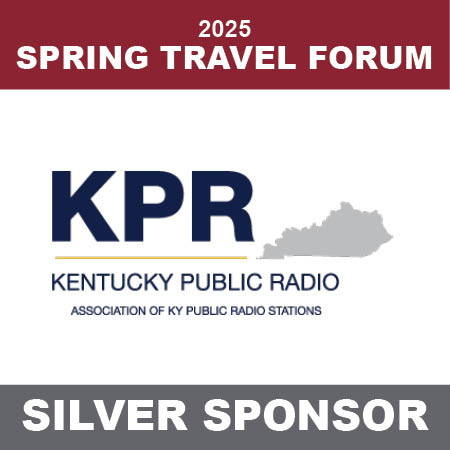August School Opening ResearchClick here to download the research report. ECONOMIC IMPACT OF AUGUST SCHOOL OPENINGON THE KENTUCKY TOURISM INDUSTRY – 2014 Prepared for: Kentucky Marina Association and Kentucky Travel Industry Association Prepared by Certec Inc. TABLE OF CONTENTSEXECUTIVE SUMMARY INTRODUCTION
ECONOMIC IMPACT OF TOURISM DURING JULY AND AUGUST 2014
Expenditures, Employment, Wages, Taxes
REFERENCES
APPENDIX A
Data and Methods: Expenditure Data, Participant Days, Direct Effects, Multiplier Effects
APPENDIX B
Definition of Terms
APPENDIX C
Business Questionnaires
EXECUTIVE SUMMARYA detailed examination of the impact of August school days on tourism expenditures, employment, and tax collections has been conducted for the Kentucky Marina Association and the Kentucky Travel Industry Association. The data used was from calendar year 2014—the most current available. Major findings of the study include:
INTRODUCTIONIn recent decades the summer tourism season has experienced a decline in business activity during the month of August compared to the month of July. During this period that Kentucky tourism business activity has decreased in August, the elementary and secondary school year has evolved further into August from its former post-Labor Day start. The tourism industry in a number of states has determined that this movement deep into August by the school year has been a primary factor in the decline of tourism business during what was formerly a peak tourism month. In the last fifteen years states across the country have passed laws governing when public, K-12 schools can begin the fall semester due to this belief that August school days negatively impact tourism revenue, state and local tax collections and seasonal job availability. A study conducted in 2012 by the University of Minnesota Tourism Center found pre-Labor Day school start dates reduce family travel between May and September by one-third. Currently, thirteen states have passed laws governing the first day of school for public, K-12 students, including, but not limited to Wisconsin, Minnesota, North Carolina, Michigan, Iowa and Virginia. Several states have conducted research on the economic impact of August school opening. All reports reviewed show August school days negatively impact August tourism revenue, state and local tax collections and seasonal job offerings. Reports vary in degrees of impact such as a 2013 report by Texas economist Ray Perryman estimating allowing the school year to begin one week prior to the 4th week in August would result in the loss of $805.2 million in spending. A February 2009 report by Alabama economist M Keivan Deravi estimated that re-arranging ten August school days to other months would result in an expected gain of $300 million in additional tourism revenues. Various other studies estimated impacts on the state economy ranging from $75.6 million per day (Pennsylvania); $180 million total impact (South Carolina); $190 million directly to tourism industry (Tennessee), and $337 million to tourism (North Carolina). These studies are listed in References. In an effort to assess the potential economic impact of August school days on the Kentucky travel and tourism industry we compared the level of business activity in the tourism industry during July and August, 2014. This is accomplished through surveys with tourism businesses and the use of the Certec ModelÓ designed for estimating tourism impacts at the state and local levels, in conjunction with an input-output model designed for estimating the indirect and induced effects of tourist spending. The procedures used are explained in detail in Appendix A. Economic benefits from tourism begin when a visitor spends his/her discretionary income in one of Kentucky’s 120 counties. Typical purchases include goods and services such as lodging, food and beverages, gasoline, souvenirs, admission fees, entertainment, or other retail goods. This initial round of spending is referred to as the direct effects. These direct expenditures create a ripple-like effect through the economy. The businesses receiving these dollars use them to pay wages and salaries, to purchases goods and services for the businesses, and to pay taxes. The individuals and businesses receiving these monies, in turn, spend them on goods, services, and taxes. This process is repeated through several rounds of spending until the impact becomes insignificant. The combined impact of these several rounds of spending is referred to as the multiplier effect. The total economic impact of August school days on Kentucky tourism is a combination of the direct effects and the multiplier effect expressed in terms of spending, jobs, wages, and taxes. It is important to note that tourism impacts all sectors of the state economy. The research findings in this report show a significant decrease in tourism spending in August, 2014 compared to July 2014. ECONOMIC IMPACT OF TOURISM DURING JULY AND AUGUST 2014ExpendituresAugust school days cost the Kentucky tourism and travel industry approximately $432 million in lost August 2014 revenue as compared to July 2014. The reduction in direct expenditures by tourists represents a 27 percent drop from July to August. A study by the Kentucky Department of Travel Development for July and August 1985 found an 11 percent drop in spending from July to August (see Reference). Thus, the gap in spending between the two months has continued to dramatically widen over the 30 year period. The tourism and travel industry made a total contribution to Kentucky's economy of $1.58 billion in July 2014 compared to $1.15 billion in August 2014 (Table 1). The purchases made by travelers while in the state accounted for $1.0 billion of this total in July and $731.8 million in August. Thus, the August total represents only 72.7 percent of the July total, or a “loss” of $274.7 million between the two months. The difference between the total economic impact and the purchases of travelers was a result of the multiplier effect, i.e. the indirect expenditures. This was triggered by the initial infusion of dollars in the economy - the $1.0 billion in July and the $731.8 million in August. These direct expenditures had a ripple-like quality as they passed from one “layer” of the economy to the next. The magnitude of these economic benefits diminished during each round of re-spending for goods and services until only an insignificantly small sum was left. The sum of these effects for the several rounds of re-spending of the initial dollars was the total multiplier effect of $575.7 million in July and $418.6 million in August. This represents an additional “loss” to the Kentucky economy of $157.1 million from the one summer month to the next. Table 1
KENTUCKY TOURISM AND TRAVEL INDUSTRY ECONOMIC DATA - 2014
July August Difference
Total Expenditures $1,582,237,493 $1,150,469,747 $431,767,746 Direct Expenditures $1,006,512,400 $731,850,984 $274,661,416 Indirect Expenditures $575,725,093 $418,618,763 $157,106,330
Total Wages $354,872,611 $258,033,452 $96,839,159
Total Taxes $165,649,792 $120,446,566 $45,203,226 State $144,340,850 $104,952,500 $39,388,350 Local $21,308,942 $15,494,066 $5,814,876
Total Employment 21,778 15,835 5,943 Jobs (Direct Expenditures) 15,240 11,081 4,159 Jobs (Indirect Expenditures) 6,538 4,754 1,784 Had spending levels remained the same in August as in July, Kentucky’s economy would have benefited from an additional $431.7 million in business activity from this discretionary spending. Where does this money go once it is in the Kentucky economy? Many hold the idea that it all goes to the service and retail sectors to support only low wage jobs. In reality, the economic benefits to Kentucky are far more widespread. It helps support dozens of local businesses that do not directly serve the state's tourists. It impacts banking, insurance, and real estate; transportation and public utilities; construction; agriculture, and manufacturing. EmploymentAugust school days cost Kentucky 5,943 jobs in August 2014, down substantially from July 2014. In 2014, a total of 21,778 jobs (in FTEs [full time equivalents]) in Kentucky were due to the expenditures made in the tourism and travel industry in July compared to 15,835 jobs in August (Table 1). This difference is due to the lower spending in August. These lost jobs are spread throughout the Kentucky travel and tourism industry. Nearly three-fifths (58%) of the hotels and motels surveyed indicated they lost employees during August. Attractions experienced similar losses with 59% indicating they lost employees in August. Marinas experienced even greater losses. All marinas surveyed (100%) indicated they lost employees during August. As a subset of overall jobs, we reviewed jobs lost by high school students since many tourism businesses employ them during the summer. When asked how many of their lost jobs were by high school students, hotels and motels indicated, on average, that two per lodging property left during August. And for attractions, the average was three per attraction. Not included in this number were two large attractions located 200 miles apart that lost a combined total of 348 high school students in August. On average, marinas lost nine high school students during the month with the range being from one to forty students. The employment opportunities are distributed throughout the state. A number of the jobs in the state are supported, in part, by tourism. Since tourism jobs are dispersed throughout the state economy, they are more difficult to identify than factory jobs. This contributes to the misunderstanding of the size and importance of tourism to the state economy. The jobs created by tourism can be found throughout the occupational structure, not just in the service sector. Jobs resulting from tourism spending are found in the high-wage occupations of professional and technical, managerial, sales, construction, craftsman, and operatives. Tourism produces a wide range of jobs in addition to the front line personnel such as desk clerks, waiters, and ticket takers travelers most visitors often observe. Tourism stimulates non-tourism industries such as agriculture, fishing, meatpacking, food processing, brewing and distilling, bottling, floriculture, construction and appliance, furniture, and linen manufacture. For example, demand for hotel rooms can create demand for the services of contractors, which generates secondary demand for steel, bricks, lumber, tile, marble, glass, plumbing and air conditioning systems, elevator cars, carpets and a variety of other goods. Similarly, tourist demand for restaurant meals creates business not only for restaurants, but for producers and packagers of fresh and frozen foods, butchers, dairies, and ultimately, for manufacturers of farm implements and fertilizers. Consequently, a healthy tourism industry means additional business for industries throughout the economy. WagesThe expenditures of travelers are the business receipts of the establishments patronized. A portion of these revenues is used by the businesses to pay their employees. In 2014 every dollar spent by travelers in Kentucky produced an average of 22 cents in wage and salary income. The total wage and salary income generated by tourism and paid by local businesses was nearly $354.9 million in July 2014 compared to $258 million in August 2014 (Table 1). This difference of over $96.8 million represents “lost” wages to the Kentucky economy in August. TaxesTourism generates state and local tax revenues. Kentucky tourism expenditures resulted in the collection of $165.6 million in tax revenues in July 2014 compared to $120.4 million in August 2014 (Table 1). August school days cost the state of Kentucky over $45.2 million in lost state and local tax revenue in August 2014 as compared to July 2014. Nearly nine out of every ten tax dollars ($144.3 million in July) went directly to Kentucky state government through taxes including sales and excise taxes and taxes on individual and corporate income. State taxes generated by the tourism industry declined to $104.9 million in August, a “loss” of $39.4 million in tax revenues. Local government operations in Kentucky such as the cities and towns, county government, and local Convention & Visitors Bureaus also benefited from tourism in the state. County and municipal governments received $21.3 million in tax revenues in July as a result of the tourism industry compared to $15.5 million in August—a “loss” of $5.8 million in tax revenues. Property tax, business taxes, and the lodging room tax contributed to these local tax revenues. REFERENCESEconomic Effect of School Opening and Closing Dates on Kentucky’s Tourism and Travel Industry, (James A. Carr and Larry D. Southard), (Frankfort: Kentucky Department of Travel Development, 1986). An Economic Analysis of Early School Start Dates in Alabama, February 2009. The Economic Benefits of Reinstituting the Traditional Summer Vacation: The Cost to Pennsylvania’s Economy Resulting from School Starting Before Labor Day, September 2006. South Carolina Early School Start Dates and the South Carolina Travel and Tourism Industries: An Analysis of Economic & Tax Revenue Impacts, August 2002. The Impact of Earlier Public School Start Dates on Business Activity in Texas and Local Areas within the State, February 2013. Texas Perryman Study, April 2009. Post Labor Day School Start Dates in Tennessee: An Analysis of the Economic and Tax Revenue Impact on the Tennessee Travel and Tourism Industry, December 2007. Early School Start Dates in North Carolina and the Affect on North Carolina’s Hospitality and Tourism Industry: An Estimate of the Potential Financial and Economic Impact, 2004. APPENDIX ADATA AND METHODSIn simplest terms the economic impact of tourism is a function of the number of visitors to the state and how much they spend while there. The research challenge is to accurately measure these quantities. A number of factors contribute to the complexity of this type of economic analysis. Among these factors are:
These are a few of the critical factors affecting the spending patterns of visitors. It is the Certec position that tourism economic impact begins with the purchase of goods and services by tourists. Therefore, to most accurately measure the sum of these economic transactions requires data collected from both tourists and tourism businesses that answer questions directly related to the research task at hand. The Certec ModelÓ was developed in the 1970s, and updated annually, to measure the direct tourism economic impacts at the state and local levels. The data required as inputs include the spending pattern of visitors and business data such as rooms sold at lodging facilities and the number of visitors to attractions. Expenditure DataThe information on the spending pattern of travelers to Kentucky was available for 2014 through research conducted by Certec Inc. for the Kentucky Tourism, Arts, and Heritage Cabinet. This research provides very detailed information on the spending of visitors in the state. Participant DaysKentucky is divided into tourism sectors. Certec Inc. identified tourism and travel businesses operating in 2008 by updating the Profile of Kentucky tourism businesses previously compiled by the Kentucky Department of Travel. This Profile has been updated to 2014 from a review of tourism publications such as the Hotel and Travel Index, AAA publications, the Kentucky 2014 Official Visitor’s Guide, other Kentucky Travel Guides, telephone directories, as well as several individual business brochures. Certec designed surveys with its project partners to collect business data from tourism businesses (lodging, marinas, and attractions) that are members of the Kentucky Travel Industry Association and the Kentucky Marina Association. The questionnaires (see Appendix C) were sent via e-mail to the members of each organization. The information was collected through the Kentucky Travel Industry Association with the assistance of Hank Phillips, President and CEO and the Kentucky Marina Association with the assistance of J. D. Hamilton, President and Michele Edwards, Executive Director. E-mail or mail interviews were received from the owner and/or manager of many of those establishments during the period December 2015 and January 2016. The interview had as its primary focus the number of lodging rooms sold, visitors to the attractions facility, and marina revenues in July and August 2014. Information of employee changes in August was also obtained. Complete interviews were obtained from a number the businesses in the sample. The lodging properties that responded represented 1.4 million guests in 2014. The attractions that responded represented 5.6 million visitors in that year. The marinas represented over 493 thousand marina guests in 2014. Direct EffectsOnce the basic inputs to the Model were calculated, several statistical analyses were conducted using the equations of the Certec ModelÓ. Note that the Model was modified for use in this project to reflect the Kentucky tourism industry. This Model was designed to provide expenditure estimates at the sub-state (county) level for each of the industry sectors. These sub-state estimates by sector were combined to provide expenditure levels for the entire industry within the state. Multiplier EffectsThe indirect and induced expenditures resulting from the initial infusion of money into the Kentucky economy were calculated using the RSRI input-output (I-O) model developed for the U.S. Department of Transportation and calibrated to the Kentucky economy. The output from the Certec ModelÓ served as data input for the I-O model. The latter model provided indirect expenditures resulting from the tourism industry. The tax revenues resulting from this industry were also estimated. State and local tax revenues as well as federal tax revenues were obtained by using sector output generated by the Certec ModelÓ with expenditure/tax relationships derived from I-O analysis. Estimates of tourism and travel industry employment were generated in a similar fashion. Sector output from the Certec ModelÓ was applied to expenditure/job relationships obtained from the I-O analysis. Employment generated by direct and indirect expenditures was obtained. The addition of the multiplier effects, as determined from the I-O model, to the direct effects, as determined from the Certec ModelÓ, provided the complete picture of the economic impact of the Kentucky tourism and travel industry presented in this report. APPENDIX BDEFINITION OF TERMSDirect Expenditure the exchange of money or the promise of money for goods or services while traveling in Kentucky, including any advance purchase of public transportation, tickets, lodging or other items normally considered an incident of travel, but which may be purchased in advance of the trip. Indirect Expenditure the second and subsequent rounds of spending of the travel dollars (direct expenditures) in Kentucky for Kentucky-produced goods and services; i.e. the multiplier effect. Input-Output (I-O) Model an economic analysis method which is designed to measure the indirect and induced effects of a direct change in a region's economy. Participant Day an individual spending one day or part of a day at a tourism or travel facility -- for example, three visitors spending one day is equivalent to one visitor spending three days. Travel and Tourism Industry the tourism industry consists of all those firms, organizations and facilities (including accom-modation, food, transportation, and related services) which are intended to serve the specific needs and wants of travelers. APPENDIX CBusiness QuestionnairesKENTUCKY TRAVEL INDUSTRY HOTEL/MOTEL SURVEYPlease answer the following questions and e-mail to Certec Inc. at [email protected] by Friday, January 8, 2016. 1. Number of rooms sold during July, 2014. _______________________ 2. Average number of guests per room. _________________________ 3. Your best estimate of the proportion of guests during July who were Kentucky residents _________% 4. Number of rooms sold during August, 2014. ____________________ 5. Average number of guests per room. _________________________ 6. Your best estimate of the proportion of guests during August who were Kentucky residents ______% 7. Did you lose any employees in early to mid-August? _______________ If so, how many were high school students? ______________ 8. Number of rooms at facility in mid-2014. ______________ Certec Inc. PO Box 627 Versailles KY 40383 KENTUCKY TRAVEL INDUSTRY ATTRACTION SURVEYPlease answer the following questions and e-mail to Certec Inc. at [email protected] by Friday, January 8, 2016. 1. Number of visitors to attraction during July, 2014. _______________________ 2. Your best estimate of the proportion of visitors during July who were Kentucky residents _________% 3. Number of visitors to attraction during August, 2014. ____________________ 4. Your best estimate of the proportion of visitors during August who were Kentucky residents ______% 5. Did you lose any employees in early to mid-August? _______________ If so, how many were high school students? ________ Certec Inc. PO Box 627 Versailles KY 40383 KENTUCKY MARINA ASSOCIATION SURVEYPlease answer the following questions and e-mail to Certec Inc. at [email protected] by Friday, January 8, 2016. 1. Gross receipts at marina during July, 2014. _______________________ 2. Estimated proportion of receipts during July from customers who were Kentucky residents. _________% 3. Gross receipts at marina during August, 2014. _______________________ 4. Estimated proportion of receipts during August from customers who were Kentucky residents. _________% 5. Gross receipts at marina during entire year - 2014. _______________________ 6. Estimated proportion of receipts during entire year from customers who were Kentucky residents. _________% 7. Total number of employees at marina at beginning of August. ____________ 8. Did you lose any employees in early to mid-August? _______________ If so, how many were high school students? ______________ 9. Total number of slips at facility in mid-2014. ______________ Certec Inc. PO Box 627 Versailles KY 40383 KENTUCKY TRAVEL INDUSTRY RESTAURANT SURVEYPlease answer the following questions and e-mail to Certec Inc. at [email protected] by Friday, January 8, 2016. 1. Number of visitors to restaurant during July, 2014. ______________________ 2. Your best estimate of the proportion of visitors during July who were Kentucky residents _________% 3. Number of visitors to restaurant during August, 2014. ___________________ 4. Your best estimate of the proportion of visitors during August who were Kentucky residents ______% 5. Did you lose any employees in early to mid-August? _______________ If so, how many were high school students? ________ Certec Inc. PO Box 627 Versailles KY 40383 |




































